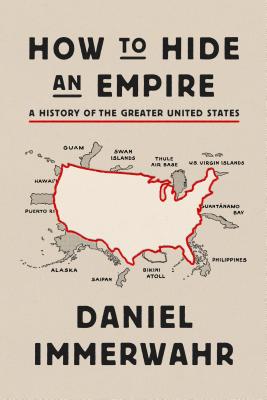How to Hide an Empire: A History of the Greater United States
Daniel Immerwahr

This is an excellent book that I’ve recommended to many people while reading it. I’ve also obsessively shared the crazy facts that I found on seemingly every page, such as:
-Prior to the current war in Afghanistan, the longest war the United States was ever involved in was the Philippine-American War (1899-1912)–note that while the US government declared the war over in 1902 (“Mission Accomplished”?), combat continued through 1912.
-The Philippine-American War was the bloodiest civil war ever fought on American soil, with more casualties than the American Civil War.
-Slavery was legalized on some US soil in the early 20th century (as part of a truce with the Muslim population of Mindanao–the 13th amendment does not apply to US nonstate territories).
-Hawaii was under martial law for three years during WWII.
-The current Japanese constitution was essentially written by Douglas MacArthur’s staff.
-Harry Truman was very nearly assassinated by Puerto Rican nationalists in 1950.
-Four Puerto Rican nationalists opened fire in the US House of Representatives chamber in 1954, wounding five representatives (although not killing any). The leader was a woman, Lolita Lebrón.
And so on. I consider myself to be fairly well-read in Philippines history, but nonetheless I learned a lot from this book. (Some friends that I talked to, on the other hand, didn’t even know that the Philippines had been an American colony at all!) Americans do not like to think of ourselves as an empire, and the teaching of American history in public (and probably private) schools reflects this self-perception, with barely any attention given to the overseas territories America has held over the years.
I found this to be a great crossover academic/popular book. It is lively and readable without sacrificing content or focusing too much on individual stories. It read similarly to “The Heartbeat of Wounded Knee,” in opening a totally different perspective on some familiar periods. Immerwahr comes across as a careful researcher, but at the same time, is not afraid to make bold statements–for example, calling out white supremacy as the main driver of which territories progressed to statehood vs. not, or comparing the Insular Cases (still on the books!) with Plessy v. Ferguson, which was rightly overturned.
My one complaint with the book was the lack of attention to Puerto Rico’s modern history, which I would like to learn more about. Immerwahr’s narrative mostly portrays the territory-based US empire as having ended after WWII. The last part of the book focuses, in very interesting ways, on the technological developments that resulted in physical occupation of territory becoming less important. However, Puerto Rico is of course a large territory that remains a colony today. When I was talking with some friends about this book, one of them said, well, Puerto Rico voted to remain a territory. And I didn’t know enough about the modern history to know whether this was right or not. I looked it up later, and there was a 2012 referendum where the majority of voters rejected the status quo and a plurality voted for statehood (ignored by Congress). In 2017, an overwhelming majority of voters chose statehood, although this was driven by a boycott of the referendum by the pro-status-quo political party. So, it’s a lot more complicated than my friend said. I would have appreciated Immerwahr’s treatment of this modern history–particularly given the recent debt crisis and natural disasters–and I would gladly have read another 100 pages!